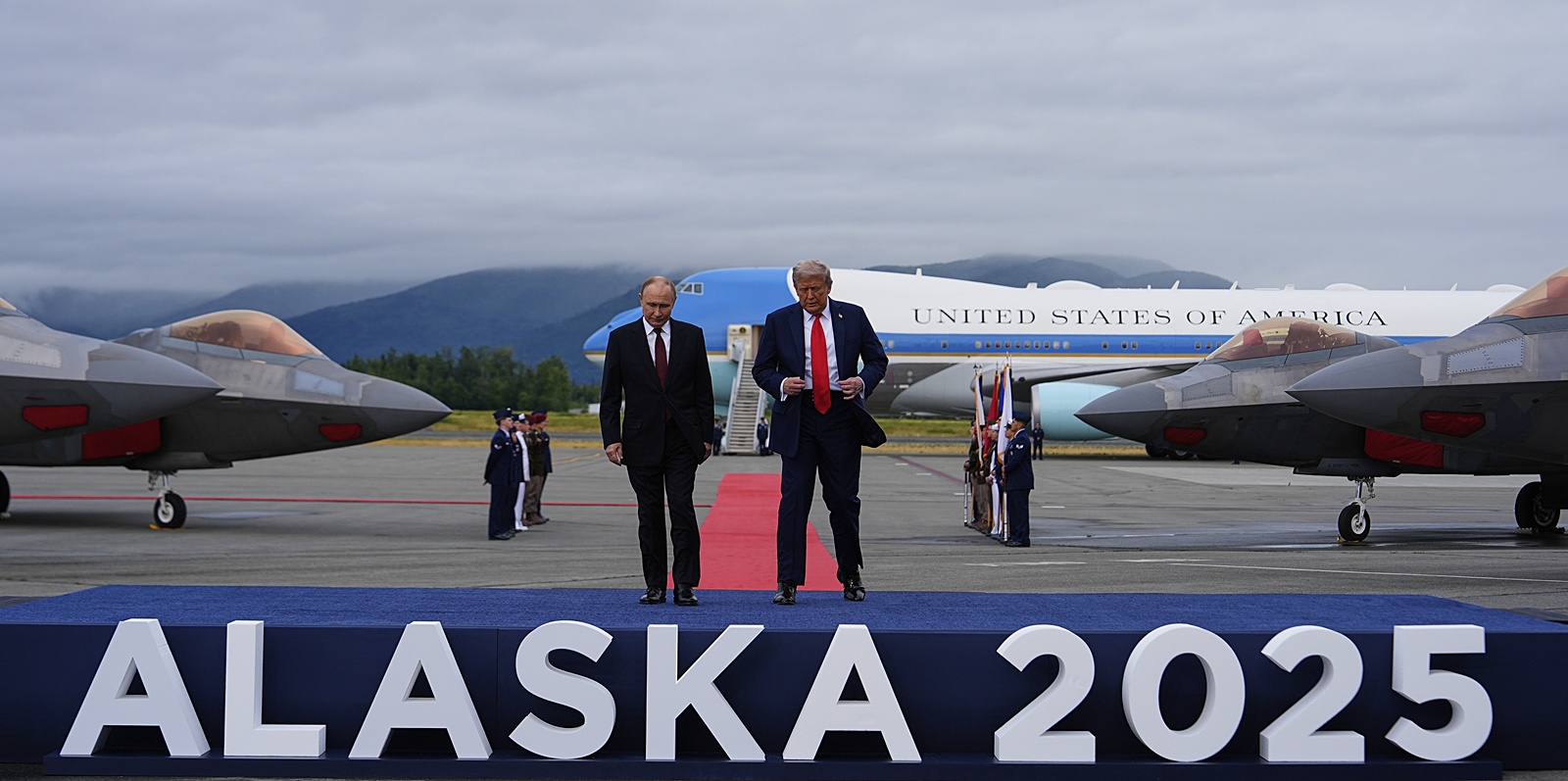If India was counting on a clear and positive outcome from the Alaska summit to avert the additional 25 per cent US tariff on Indian exports, Donald Trump and Vladimir Putin did not deliver — at least not by last night. The failure to reach an agreement leaves a dark cloud of uncertainty over India’s trade negotiations with Washington.
Despite a warm welcome from President Trump and President Putin’s friendly references to America, the two leaders could not bridge their differences on Ukraine.
At their joint press appearance, Putin spoke of an important “agreement” emerging from the talks, while Trump claimed “considerable progress” but confirmed there was no deal.
“There are just a very few [sticking points] left,” Trump said. “Some are not that significant. One is probably the most significant — but we have a very good chance of getting there,” he added, without identifying the issues.
He promised to brief Ukrainian and European leaders on his discussions with Putin.
Also Read | Russia-Ukraine war would not have happened if Trump was President in 2022: Putin in Alaska
Putin, for his part, expressed hope that US allies would not undermine any understandings reached with Trump. His emphasis remained on improving bilateral ties with Washington while holding firm to Russia’s core positions on the war.
He noted that Russia and the US are neighbours across the Northern Pacific, evoked their wartime cooperation during the Second World War, and highlighted the potential for broad commercial and strategic engagement.
Story continues below this ad
Trump has invested significant political capital in building a partnership with Moscow. Yet deep divisions persist within his own administration and across the Atlantic on the terms of peace and reconciliation with Russia. European allies remain wary of any settlement that might reward Moscow’s aggression, while Trump has been pushing for a breakthrough that he can claim as a foreign policy success.
 President Donald Trump walks onto a stage with Russia’s President Vladimir Putin in Alaska on Friday. (Photo: AP)
President Donald Trump walks onto a stage with Russia’s President Vladimir Putin in Alaska on Friday. (Photo: AP)
India’s immediate concern lies in the punitive measures Trump has tied to his Ukraine strategy. As part of the effort to pressure Putin into accepting a ceasefire, Washington announced an additional 25 per cent tariff on Indian exports — explicitly linked to Delhi’s continued purchase of Russian oil.
Since the 2022 invasion, India has become a major buyer of discounted Russian crude, a move that has improved its energy security but drawn sharp criticism from the West.
The US administration argues that targeting India, among other large importers, will cut into Moscow’s revenues and push it toward compromise in Ukraine.
Story continues below this ad
On the eve of the summit, US Treasury Secretary Scott Bessent warned that more tariffs could follow if no peace deal emerged. He urged Europe, which imports refined petroleum products from India, to join Washington in imposing severe sanctions on countries still trading extensively with Russia.
 PresidentDonald Trumpgreets Russia’s PresidentVladimir Putinin Alaska on Friday. (Photo: AP)
PresidentDonald Trumpgreets Russia’s PresidentVladimir Putinin Alaska on Friday. (Photo: AP)
Meanwhile, a major bill moving through Congress would authorise the president to impose tariffs of up to 500 per cent on states helping sustain Moscow’s war economy.
As Delhi awaits clarity on the summit’s outcome, the trajectory of the Ukraine talks, and the next steps in Washington, one conclusion is hard to avoid: India’s appetite for cheap Russian oil over the last three years has bound it, however indirectly and unwittingly, to the geopolitics of war and peace in Ukraine.
The Modi government now faces a difficult calculation — how much political and economic cost it is prepared to bear to maintain the Russian oil connection.
Story continues below this ad
(C Raja Mohan is a contributing editor on international affairs for The Indian Express)
